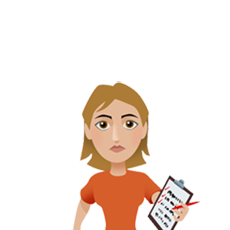4 Tips to Introduce an ADHD Child to Systems and Structures

Systems and structures help us tame the chaos of life with ADHD, bringing order to our homes and more confidence and happiness to our lives. Easier said than done, isn't it? For systems and structures to work, you have to put them in place! That can be tricky, especially when children are older. Whether we're talking about morning checklists, a hand gesture to delay attention-seeking behaviors, or code words to facilitate communication, how do you do it? How do you increase the likelihood that systems will be used and effective in helping the whole family cope with ADHD's challenges?
A few tips to keep in mind when introducing systems and structures to your child:
1. Create a relationship of trust.
We begin developing this relationship from day one. It tells them:
- It's ok to cross the street; I have your hand.
- It's all right to take a chance and talk to that classmate; I'll be there when you get home.
- It's ok to make checklists, use code words, have me check your homework; I'm your parent, and that's what I do.
A relationship of trust tells them you're not going to do anything whacky and crazy – though teens tend to think everything we do is whacky and crazy. They need to feel safe. Our job is to have their backs – and to make sure they know it.
Article continues below...
Want to Motivate Kids?
Download a free tipsheet "The Parent's Guide to Motivating Your Complex Kid" to help your child find the motivation to do... anything and everything!
2. Make it easy.
Life is so complicated. Why add to the stress if you can possibly help it! If, for instance, you are going to use a reward system, try to keep it simple. Sometimes, we're so invested in making a really good plan or chart that we lose sight of the goal.
These rewards are for these behaviors; if you do this in the morning, you can earn points, but if you don't do X, then you can't carry your points over. And if you don't have this many points, you can't do that activity.
It's like a confusing cellphone plan! It's too much. Simplify, simplify, simplify. Make your systems and structures easy enough to understand and integrate into daily life. An electronics company recently put out a great campaign with the tagline, “So easy, even an adult can figure it out.” That's good advice to apply to your systems and structures!
3. Get buy-in.
Your kid has to understand and see value in the systems and the structures. Is it reasonable? Can I do this? Do I want to do this? Is it going to work? Remember, the ADHD brain will not do anything if it's not genuinely interested and motivated. So what's in it for your child?
4. Understand your child.
What motivates your child? What type of disposition does she have? If our kids don't buy into a plan, a system, or a structure, our natural response might be, “Why can't I ever get you to do anything?” The implication, though perhaps unstated, is, “What's wrong with you?”
When we come from a place of curiosity, rather than judgment, we might consider, instead: “What's going on with my child? Is he trying to assert his independence? Is he unmotivated by what I'm putting out there? Does he not see value in this system and structure? Is it too complex? Or is he worried because someone was unkind to him on the bus today, and he's so distracted that he's not even paying attention to what I'm saying?”
Be curious and look at what's going on underneath. This will help you develop strategies that work for your child, for you, and for your family. That's what will net you critical buy-in.
It takes patience and persistence to lay the groundwork for effective systems and structures. The results are well worth it – your child makes it to the bus without forgetting homework, or goes to bed without a meltdown, or remembers to take medication without prompting. That kind of progress fosters independence and success – and, at the end of the day, that's what we're trying to help our kids achieve.


